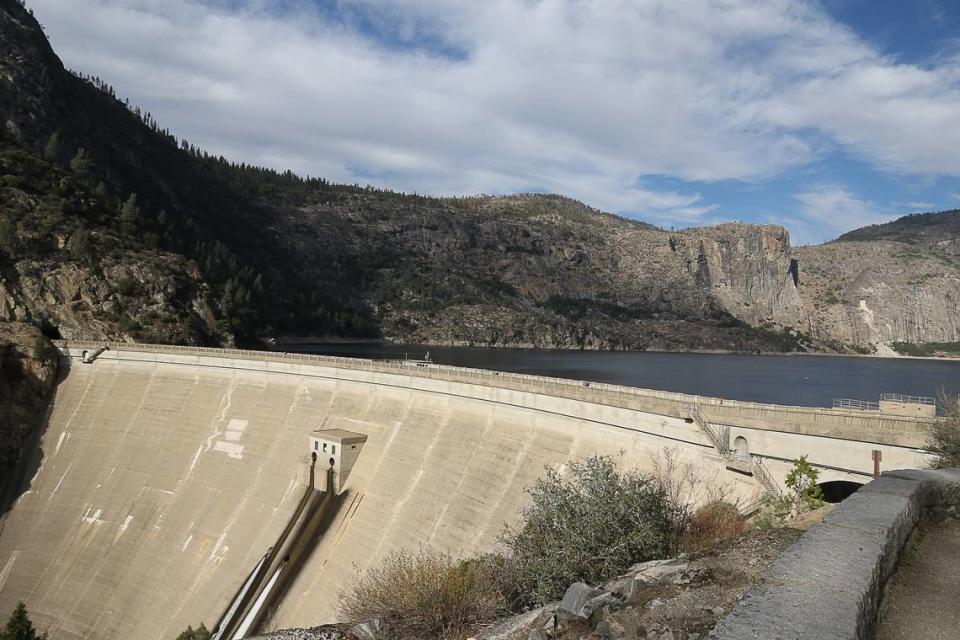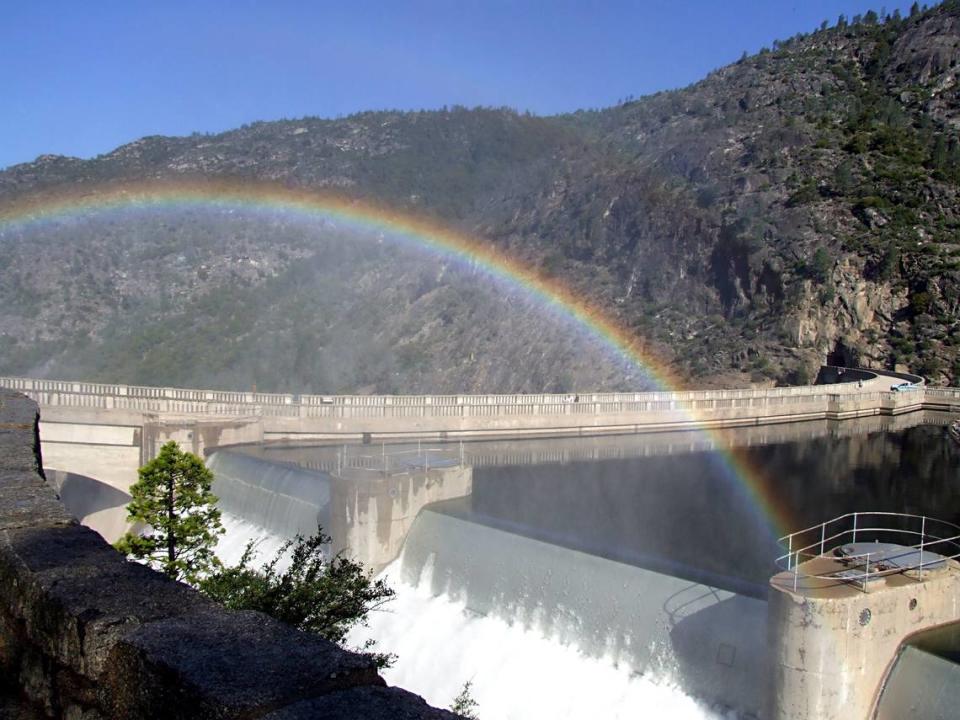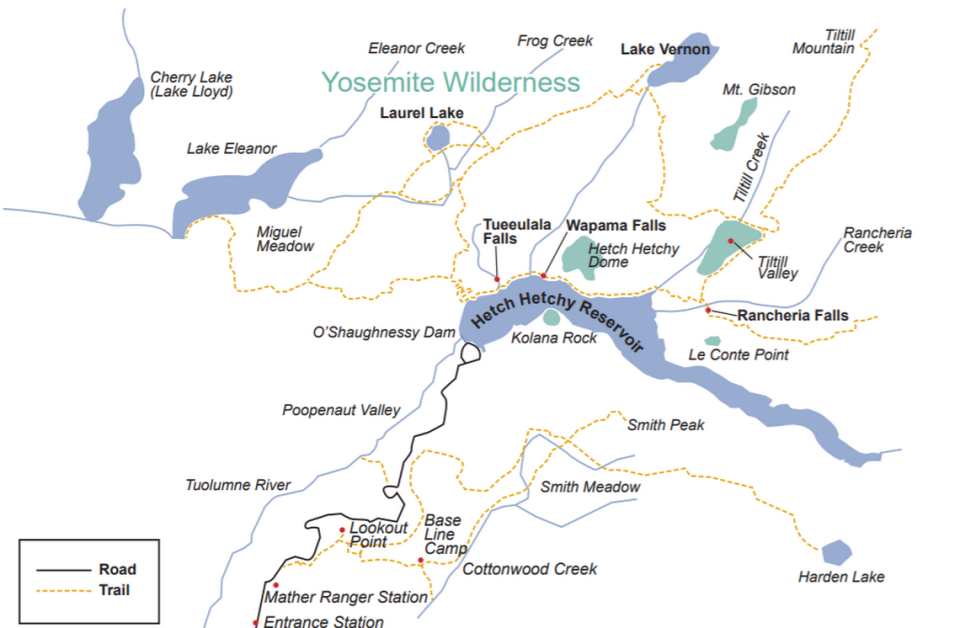Green groups protest how San Francisco uses river that runs through Modesto area
Several environmental groups say San Francisco’s drought risk is overstated and asked the city on Tuesday to rethink how its uses the Tuolumne River.
They said chinook salmon and other wildlife suffer from the current operations, especially the river stretch in and near Modesto.
At a meeting of the San Francisco Public Utilities Commission, the groups urged more conservation and wastewater recycling. The agency responded that these “single-issue activists” do not understand the city’s needs.
San Francisco secured rights in 1913 to about an eighth of the Tuolumne, which arises at about 13,000 feet in Yosemite National Park. Most of the water diversion is at Hetch Hetchy Reservoir, built just inside the western park boundary to the dismay of early preservationists.
The system provides most of the water used in San Francisco and varying proportions to 26 other locales in San Mateo, Santa Clara and Alameda counties. It serves a total of about 2.7 million residents and also taps wells, local watersheds and other sources.
The Modesto and Turlock irrigation districts get about half of the Tuolumne under rights granted soon after their 1887 founding. The water is captured at Don Pedro Reservoir in the Sierra Nevada foothills. MID and TID supply about 210,000 acres of farmland, as well as treatment plants that supplement wells for roughly 350,000 residents of Modesto, Ceres and Turlock.
Smaller rights holders take some of the Tuolumne downstream of Don Pedro. About 20% of the natural flow reaches the Sacramento-San Joaquin Delta and San Francisco Bay in an average year. Drought can squeeze it to 10%.
“We want higher freshwater flows in our rivers and bay, and we want a thriving Tuolumne River ecosystem and a restored bay-delta,” San Francisco resident Nancy Arbuckle told the PUC. She is a member of the Tuolumne River Trust, which has offices there and in Modesto and Sonora.

Salmon spawning stretch is key
MID, TID and San Francisco work together on meeting state and federal rules for Tuolumne fish. The key area is just downstream of Don Pedro, where salmon return to spawn after a few years in the Pacific Ocean. The eggs and newly hatched fish need cold water over several months from fall to spring.
The diverters have proposed boosting Don Pedro releases somewhat, but far from what environmentalists would like. They have offered nonflow habitat upgrades, such as more gravel spawning beds.
In very wet years like 2023, the Tuolumne has plenty of water for fish, farms and cities. This stream is near the southern end of the chinook range, which supports commercial and sport fishing as far north as the Bering Sea off Alaska.
California storms were well below average from 2020 to 2022, resulting in fewer salmon returning to spawn. The next generation was too small in number to allow fishing off the coast, prompting closures this year and last.
“It’s been a tragedy for many salmon fishing communities and Indigenous groups all up and down our state,” said Francis Mendoza, water and land justice manager for Save California Salmon. The group is based in the North Coast city of Arcata.

How bad will future droughts be?
The groups are not asking San Francisco to reduce its total diversions but to change how it stores the supply, said Peter Drekmeier, policy director at the Trust.
The current policy leaves too much in Hetch Hetchy and smaller reservoirs to guard against drought, he said. Some of that water could instead run down the river to benefit fish, he said.
Drekmeier said the SFPUC planning assumes the kind of extreme drought that occurs only once in every 25,000 years.
The groups held a rally outside San Francisco City Hall before the PUC meeting. They addressed the commission during the public-comment period required for all government meetings in California.
Members could not respond because the matter was not on the agenda. The Modesto Bee watched the livestream of the meeting and emailed the staff for a response.
“It’s easy for single-issue activists to ignore the facts,” Press Secretary Nancy Hayden Crowley said. “But it would be the SFPUC that would have to answer to our almost 3 million customers across the Bay Area if our reservoirs are too low in the next drought because we didn’t follow science-based planning.”
Crowley said climate change “will make future droughts more severe and more frequent. That will give our water system even less time to recover.”
The spokeswoman said San Francisco is already “a global leader” in reducing the average water use by customers. The city also has a program where businesses and apartment complexes can redo their plumbing to flush toilets and water plants with storm runoff and other sources of non-potable water.
Tuesday’s protest also featured a group called Great Old Broads for Wilderness, based in Durango, Colorado. On hand as well were Restore the Delta, the Golden State Salmon Association, Sierra Club California, the Delta Tribal Environmental Coalition, San Francisco Baykeeper, the San Francisco League of Conservation Voters and the Center for Biological Diversity.


